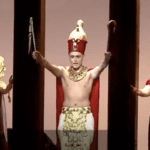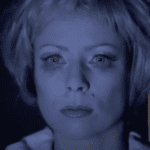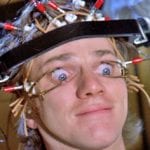 Health
Health  Health
Health  Weird Stuff
Weird Stuff Ten Surreal Attempts to Reverse Baldness
 Facts
Facts 10 U.S. Government Contingency Plans for the Unthinkable
 History
History 10 Weird Distractions from the Great Depression
 Movies and TV
Movies and TV 10 Fictional Kings Who Go from Good to Bad
 Food
Food The Fantastic Chemistry Behind Why 10 Popular Foods Taste So Good
 Technology
Technology 10 Futuristic Fungal Technologies
 History
History 10 Not-so-Spooky Events That Also Happened on October 31
 Creepy
Creepy 10 Unsettling Ghost Stories to Tell This Halloween
 Crime
Crime 10 Truly Evil People Who Used Halloween as the Perfect Cover
 Health
Health 10 Futuristic Ideas to Treat Common Medical Problems
 Weird Stuff
Weird Stuff Ten Surreal Attempts to Reverse Baldness
 Facts
Facts 10 U.S. Government Contingency Plans for the Unthinkable
Who's Behind Listverse?

Jamie Frater
Head Editor
Jamie founded Listverse due to an insatiable desire to share fascinating, obscure, and bizarre facts. He has been a guest speaker on numerous national radio and television stations and is a five time published author.
More About Us History
History 10 Weird Distractions from the Great Depression
 Movies and TV
Movies and TV 10 Fictional Kings Who Go from Good to Bad
 Food
Food The Fantastic Chemistry Behind Why 10 Popular Foods Taste So Good
 Technology
Technology 10 Futuristic Fungal Technologies
 History
History 10 Not-so-Spooky Events That Also Happened on October 31
 Creepy
Creepy 10 Unsettling Ghost Stories to Tell This Halloween
 Crime
Crime 10 Truly Evil People Who Used Halloween as the Perfect Cover
10 Best Uses Of Classical Music In Classic Cartoons
I grew up watching Bugs Bunny, Tom and Jerry, and Popeye cartoons, because they were regularly shown on the independent stations here in St. Louis. (Disney cartoons weren’t readily available unless the Sunday night Wonderful World of Disney show featured one of them.) Those cartoons helped develop my love of classical music. (Sorry, Mom. You were a huge musical influence, but not quite as much as Bugs Bunny!) While the vast majority of the cartoons of the 1930s-1950s made excellent use of popular music and original compositions, they also used classical music to great effect, creating some of the finest animated masterpieces of all time.
Rossini’s overtures were popular with cartoonists, as were Liszt’s Hungarian rhapsodies and Brahms’ Hungarian dances. In cartoon-land, Beethoven’s Moonlight Sonata became synonymous with quiet, moonlit scenes, while the opening notes to his Fifth Symphony were used to introduce Nazis during World War II. The final movement of Liszt’s Les Preludes frequently introduced some cartoons. Any favorites you’d add to this list? Enjoy!
Music: Rossini’s William Tell Overture
Made before the William Tell Overture became identified as The Lone Ranger’s theme, The Band Concert features bandleader Mickey leading an outdoor performance. While the band plows through the overture, Donald Duck continually interrupts by playing “Turkey in the Straw” on his recorder.
Music: Brahms’ Hungarian Dances #5, 7, 6 and 17 (they appear in that order)
The familiar story of the three little pigs was a popular vehicle for cartoonists. This Warner Bros. version cleverly syncs the action with Brahms’ music, so much so that the music seems like a fifth character.
Music: Von Suppe’s A Morning, Noon and Night in Vienna
Bugs is the conductor of a musician-less orchestra. He performs Von Suppe’s “Morning, Noon and Night in Vienna,” but with a twist: He turns part of it into a cowboys and Indians saga, using his ears as props.
Music: Largo al factotum aria from Rossini’s Barber of Seville opera
This famous aria was never showcased better in a cartoon than in this Tex Avery romp (although Long-Haired Hare comes close). After a two-bit magician fails to convince Poochini, the “world’s greatest baritone,” to let him into the opera singer’s act, the magician uses his wand to make life quite difficult for Poochini. It’s one of Avery’s absolute best. It’s often cut these days because of some unfortunate racial stereotypes, but you can still find the uncut original. Note: Watch for the fantastic bit where Poochini “breaks the fourth wall” and plucks a hair from the “film.”
Music: Johann Strauss II’s Die Fledermaus
Tom is the conductor of an orchestra of cats. Naturally, Jerry wants in on the act, and of course, Tom repeatedly shoes him away. Excellent choreography in this one. And both Tom and Jerry look pretty sharp in those tuxes.
Music: Tchaikovsky’s Piano Concerto #1, Strauss’ Tales from the Vienna Woods and The Blue Danube
Warner Bros. frequently poked fun at Disney, especially considering many animators migrated from Disney to Warner Bros. (and MGM). A Corny Concerto rips on Disney’s Fantasia (see #2), starting with Elmer appearing as an unshaven Stokowski introducing the two segments. The first segment is a wild romp in the Vienna woods with Bugs, Porky and an unnamed dog. The second is more standard fare of a duck protecting a family of swans from a vulture.
Music: Liszt’s Hungarian Rhapsody #2
The Cat Concerto won the Academy Award for Short Subjects-Cartoons in 1946. Warner Bros. released a nearly identical cartoon the same year, Rhapsody Rabbit, which had many of the same gags. Both MGM and Warner Bros. accused the other of plagiarism, but nothing official came of it. It’s a toss-up as to whether The Cat Concerto or Rhapsody Rabbit is the better cartoon. Also watch Rhapsody in Rivets, an Oscar-nominated Warner Bros. cartoon that features the construction of the “Umpire State Building” while the foreman/conductor leaders the show.
Music: Rossini’s Barber of Seville Overture
Bugs does Rossini in a beautifully timed and written masterpiece. Elmer chases Bugs into a theater. Bugs and an unwilling Elmer act out Rossini’s “Barber of Seville,” with Bugs giving Elmer a full head manicure. Best part: Bugs uses his ears to massage Elmer’s bald head. Some of the lyrics: “Hey you! Don’t look so perplexed/why must you be vexed/can’t you see you’re next? Yes, you’re next. You’re so next!” and this one: “There! You’re nice and clean! Although your face looks like it might have gone through a machine.” (Note: The music here is from the overture, while the music from #7 is from the famous aria of the opera.) The film quality is not good but this is the only English language version I could find on youtube.
Music: Dukas’ The Sorcerer’s Apprentice
Fantasia is one of Disney’s greatest films. It’s a safe bet to say that more people saw the segments of Fantasia as one-off cartoons on TV than actually saw the movie in the theater. The best part (and probably best-known) is the Sorcerer’s Apprentice, with Mickey as the apprentice who literally gets in over his head. The rest of the music featured in Fantasia was: Bach’s Toccata and Fugue in D Minor, Tchaikovsky’s Nutcracker Suite, Stravinsky’s The Rite of Spring, Beethoven’s Sixth Symphony, Ponchielli’s The Dance of the Hours, Mussorgsky’s Night on Bald Mountain, and Schubert’s Ave Maria.
Music: Wagner’s Ring Cycle
Bugs and Elmer Fudd do Wagner in this Chuck Jones masterpiece. Some may have put Fantasia first, but this Bugs Bunny short is consistently ranked as the best Bugs Bunny cartoon of all time, and usually the best of all cartoon shorts. Jones reduces Wagner’s whole Ring saga to 6½ minutes in a hilarious parody — and it’s one of the only times Elmer actually “gets” Bugs. You’ll never listen to “Flight of the Valkyries” again without hearing Elmer sing, “Kill the wabbit, kill the wabbit, kill the wabbit!”








